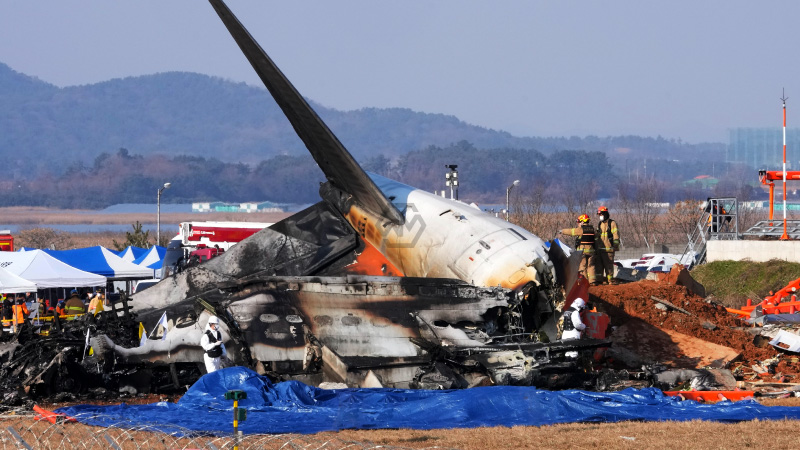- Jeju Air flight crashes at Muan Airport, leaving 176 confirmed dead.
- Bird strike and hydraulic failure among suspected causes of the crash.
- Authorities recover black boxes as search efforts continue for missing victims.
South Korea faced its worst aviation disaster in decades when a Jeju Air flight carrying 181 passengers and crew crashed at Muan International Airport early Sunday. Rescue efforts recovered two survivors from the tail section, while 176 fatalities have been confirmed.
The incident has brought renewed attention to Muan Airport’s history of bird strikes, the highest among South Korea’s regional airports.
Investigations Underway: What Caused South Korea’s Devastating Plane Crash?
The Jeju Air crash at Muan International Airport has left an indelible mark on South Korea, with 176 confirmed deaths and three individuals still unaccounted for. Two survivors, both crew members, were pulled from the tail section, the only part of the aircraft that remained intact after the crash. Families of the victims have gathered at the airport, seeking answers and solace during this harrowing time.
Initial investigations suggest a bird strike may have been a contributing factor, as air traffic controllers warned the pilots about bird activity minutes before the crash. However, experts emphasize that other factors, such as hydraulic system failure, must also be thoroughly examined. The recovery of both black boxes is expected to shed light on the sequence of events leading up to the disaster.
Muan Airport’s alarming rate of bird strikes has sparked a nationwide conversation about aviation safety measures. Authorities have deployed advanced technologies like AI monitoring and radar to mitigate risks, but the Jeju Air crash highlights gaps in the current system. The disaster underscores the urgent need for comprehensive strategies to ensure safer air travel.
Beyond the immediate investigation, questions loom about the emergency response at Muan International Airport. Experts are scrutinizing why fire crews and foam preparations were not already in place during the landing attempt. This tragedy serves as a stark reminder of the critical role ground teams play in averting potential catastrophes.
This devastating crash not only demands a thorough investigation but also serves as a call to action for better preventive measures and emergency preparedness in aviation.
“The tragedy of life is not death but what we let die inside of us while we live.” – Norman Cousins



